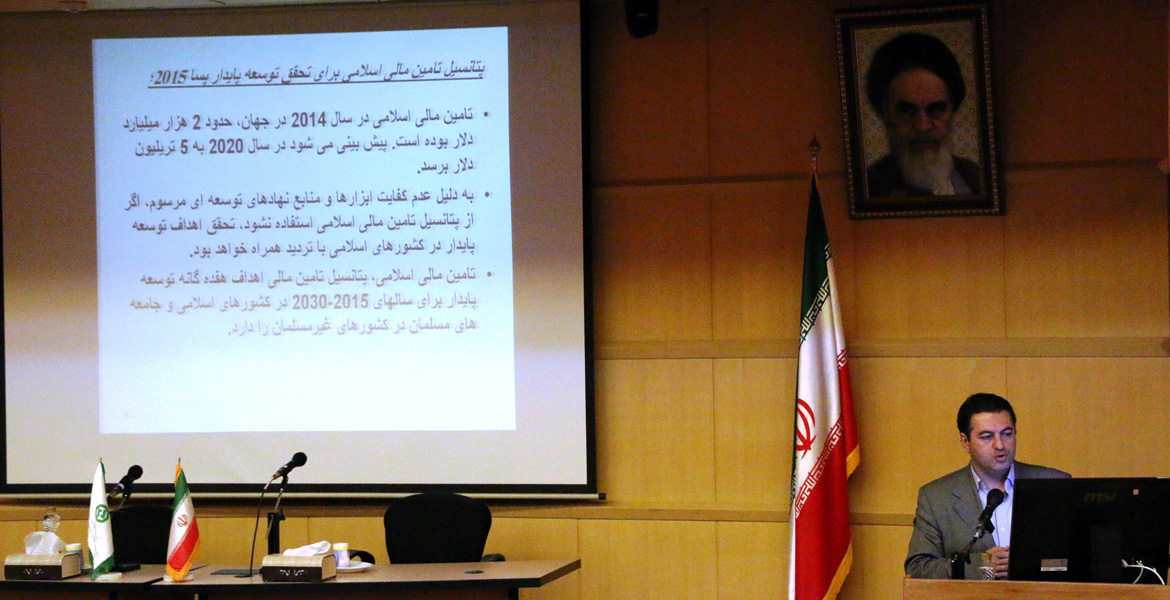
The IAIF held the 5th specialized session on “sustainable development goals between 2015 to 2030 and the potential of Islamic financing to achieve them” on 8 May. 2016.
Dr. Mirjalili, Associate professor at the Institute of Economics, Institute for Humanities and Cultural Studies, and former representative of Iran to the World Bank, said the United Nations adopts “consensus goals” for development at the summit. These are 15-year goals and the previous period was from 2000 to 2015 and since 2015 there have been other goals for the 15-year period leading up to 2030.
Regarding the "sustainable development", he said the purpose is to make those goals that have been achieved in these 15 years sustainable so that they do not go back to the past.
As to why Muslims argue that Islamic financial instruments should be used to achieve these goals and to finance them, Mirjalili said in the meeting that all heads of state and representatives of the United Nations attended, it was announced that the world resources are not enough to achieve these goals and the solution of Muslims is Islamic financing a sustainable method and that is why Islamic financing grew by 17% from 2009 to 2015 and during this period $ 2 billion financing was done through this way.
‘Sustainable development is essential when the ultimate goal is to eradicate poverty. Thus, last September, the next 15-year plan was signed at the United Nations by the leaders of all countries, entitled "Transformation of our world”, a 15-year action plan until 2030 for sustainable development’ he said.
He added rehabilitating welfare for all people of the world, equal and inclusive education, achieving gender equality and empowering all women, promoting sustainable economic growth and creating a resistant infrastructure which is the basis of sustainable development, are part of the goals of this program.
Development institutions say that there are not enough resources for all the people of the world to achieve these goals. In this situation, Islamic countries have announced that they can do the method of Islamic financing for all countries of the world. It is predicted that by 2020, the volume of Islamic financing will reach 5 thousand billion dollars in the world.
Mirjalili pointed out the strategies of Islamic financing to achieve the goals of this program and eliminate the shortage of financial resources in the world, stating in Islamic financing, there is a subject called Zakat whose use is mentioned in the Quran. Zakat, charity, Alms and khums have the potential to reduce poverty. Furthermore, in times of economic shock, zakat can be used to settle the debts of the poor.
He went on to say that apart from zakat, waqf has the same feature. Waqf is to promulgate religion, but it also has another purpose called the "safety net" that covers poverty. In Islamic culture, waqf and zakat are "safety nets". Waqf is used to help the poor and provide social services. Waqf has a lot of use for achieving sustainable development. The Muslims suggested how to establish the “institution of micro-Islamic financing” with waqf.
He also mentioned that other Islamic financing methods are sukuk bonds and istisna contracts, stressing these instruments have a high potential in the development of infrastructures such as water, sanitary facilities, energy and shelter that can cover up to 11 goals.
At the end, Mirjalili said between 2001 and 2013, $ 84.3 billion worth of infrastructure sukuk was issued in 10 countries, emphasizing that partnership agreements are another Islamic financing solution that has a high potential for sustainable economic growth.


